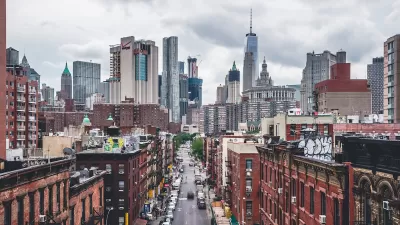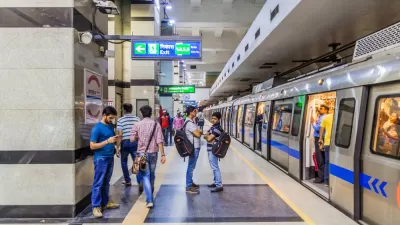A novel approach to quantifying the world's urban population provides insight into a changing world.

The European Commission and the Organization for Economic Cooperation and Development (OECD) recently presented "groundbreaking new mapping research" at World Urban Forum 10, concluding that there are around 10,000 cities in the world.
Gregory Scruggs shares insight into the unprecedented effort to document and define the contemporary city in an article for Next City. Nailing down a definition of cities is surprisingly challenging. Nuances can neglect huge swaths of the built environment or in wildly different population estimates.
No two countries define cities the same way, notes Scruggs: "In Denmark, 200 people living near each other constitutes a city. In Japan, the threshold is 50,000," for example.
The new mapping project overcomes some of those challenges by adding a third definition besides urban and rural: the town. According to Scruggs's explanation of the new definition, "over a quarter of the planet lives in towns — like those Danish hamlets of 200-odd souls — a category that the world has largely ignored in its preference for an urban-rural binary, the idea that someone either lives in a city or in the countryside."
A few findings from the study stand out: half of the world's 10,000 cities didn't exist 40 years ago, for example, and 20 percent of the world's cities are shrinking. "[Shrinking is] getting more common in countries where the population has started to stagnate or decline," according to a quote from OECD’s head of urban statistics, Rudiger Ahrend, included in the article.
FULL STORY: There are 10,000 Cities on Planet Earth. Half Didn’t Exist 40 Years Ago

Trump Administration Could Effectively End Housing Voucher Program
Federal officials are eyeing major cuts to the Section 8 program that helps millions of low-income households pay rent.

Planetizen Federal Action Tracker
A weekly monitor of how Trump’s orders and actions are impacting planners and planning in America.

Ken Jennings Launches Transit Web Series
The Jeopardy champ wants you to ride public transit.

Crime Continues to Drop on Philly, San Francisco Transit Systems
SEPTA and BART both saw significant declines in violent crime in the first quarter of 2025.

How South LA Green Spaces Power Community Health and Hope
Green spaces like South L.A. Wetlands Park are helping South Los Angeles residents promote healthy lifestyles, build community, and advocate for improvements that reflect local needs in historically underserved neighborhoods.

Sacramento Plans ‘Quick-Build’ Road Safety Projects
The city wants to accelerate small-scale safety improvements that use low-cost equipment to make an impact at dangerous intersections.
Urban Design for Planners 1: Software Tools
This six-course series explores essential urban design concepts using open source software and equips planners with the tools they need to participate fully in the urban design process.
Planning for Universal Design
Learn the tools for implementing Universal Design in planning regulations.
Heyer Gruel & Associates PA
Ada County Highway District
Institute for Housing and Urban Development Studies (IHS)
City of Grandview
Harvard GSD Executive Education
Toledo-Lucas County Plan Commissions
Salt Lake City
NYU Wagner Graduate School of Public Service





























